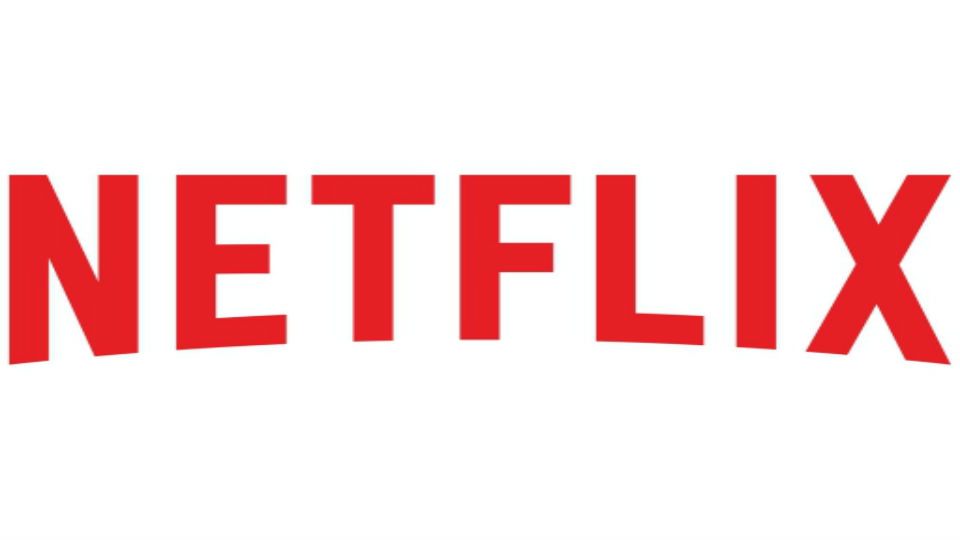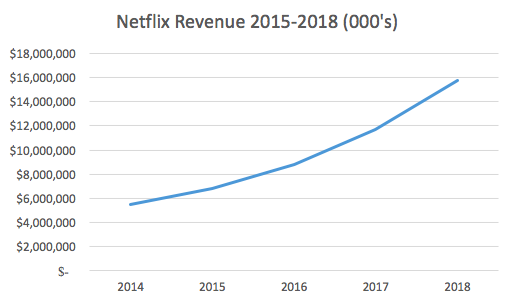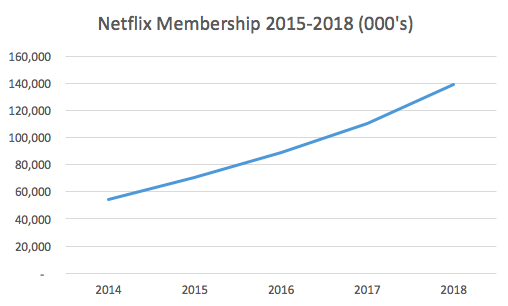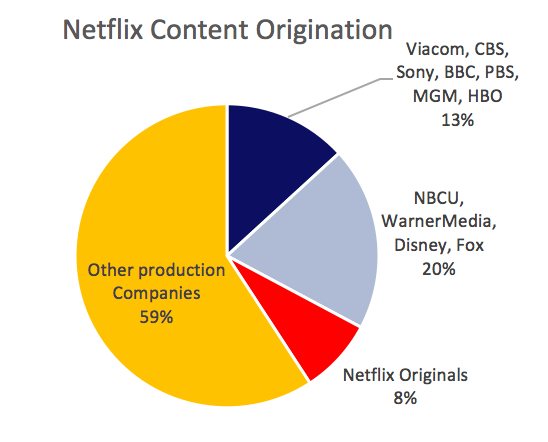 eResearch | The media industry was quickly disrupted by Netflix (NASDAQ: NFLX; LSE: 0QYI; DE: NFC), a movie & TV show online (streaming) service as the Company took market share of viewers from legacy media offerings such as cable and satellite. The Company recently lost bids to renew the broadcast rights on their most viewed TV shows, “Friends” and “The Office”, as traditional media companies are now developing their own streaming platforms to compete against Netflix and contracts for popular shows are now put up for auction.
eResearch | The media industry was quickly disrupted by Netflix (NASDAQ: NFLX; LSE: 0QYI; DE: NFC), a movie & TV show online (streaming) service as the Company took market share of viewers from legacy media offerings such as cable and satellite. The Company recently lost bids to renew the broadcast rights on their most viewed TV shows, “Friends” and “The Office”, as traditional media companies are now developing their own streaming platforms to compete against Netflix and contracts for popular shows are now put up for auction.
The Company had significant growth in the past four years, increasing revenue by 187% to US$15.7 billion in 2018 from $5.5 billion in 2014. The revenue growth rate consistently increased in each of these years, with revenue growing 35% in 2018 and 32% in 2017. In addition to paid membership increasing by 26% to 139 million in 2018 compared to 110 million in 2017, the Company is also starting to show signs of economies of scale as they increased operating margins year-over-year to 10% in 2018 compared with 7% in 2017, and 4% in 2016.


In 2018, AT&T Inc. (NYSE: T; DB: SOBA) acquired Warner Media to launch their own streaming platform in 2020 called HBO Max, and is expected to cost between US$15-18 per month. AT&T won the bid for the 90’s hit show “Friends”, which is currently the second most viewed show on Netflix, and will be paying US$85 million per year for the rights to stream the show in the United States (U.S.) for five years starting in Q1/2020.
In 2019, Walt Disney Co. (NYSE: DIS) acquired 21st Century Fox, taking control of rights for movies such as “Star Wars” and “Deadpool”, in preparation for the launch of their own streaming platform Disney + in November 2019, which will cost US$6.99 per month. The platform will also include Disney’s family of brands including Pixar, Marvel, Disney, Star Wars, and National Geographic, many of which are currently streaming on Netflix’s platform.
In 2020, Comcast Corporation (NASDAQ: CMCSA) is set to launch their own streaming platform through their subsidiary, NBCUniversal, and is expected to cost around $10-14 per month. Comcast also plans to provide their service for free to cable holders, unlike Netflix and new streaming services who are only subscription based. This year, NBCUniversal announced that they will be buying the rights for “The Office”, Netflix’s top viewed TV show, for five years starting in 2021, which will cost US$100 million per year.

In preparation for Intellectual Property (IP) losses of popular shows, such as “Friends” and “The Office”, Netflix started developing their own line of content under their own name. In 2018, the Company invested US$12 billion on proprietary content creation, an increase of 35% compared to US$8.9 billion spent in 2017. Netflix expects to aggressively invest into content creation in preparation for the competitive landscape, resulting in expected record negative free cash flow of US$3 billion in 2019. In April, 2019, Netflix raised US$2.2 billion and expects to invest US$15 billion for content creation in 2019. In comparison, AT&T reported a US$2.5 billion investment into content creation in 2017.
Currently trading at 8.6x 2019 consensus Revenue estimate of US$20.2 billion and 55.9x 2019 consensus EBITDA estimate of US$3.1 billion, Netflix commands premium multiples due to their revenue growth and dominant market share. Can Netflix continue their market share dominance in the face of competitive pressures from new streaming entrants and competition for content? And, will users keep Netflix and subscribe to one or more of the new entrants, or can WarnerMedia, NBCUniversal or Disney+ lure viewers away from Netflix’s permanently.
//
Netflix, Inc. (NASDAQ: NFLX; LSE: 0QYI; DE: NFC)
Headquartered in California, United States, Netflix is a media-services provider with over 140 million paid subscribers for their streaming platform. Since 2012, in preparation for competition to their streaming platform, Netflix has taken a more active role as a producer and distributor for both movies and TV shows. Netflix currently trades at US$380.94 with a market capitalization of US$166.4 billion.
AT&T Inc. (NYSE: T; LSE: 0QZ1)
Headquartered in Texas, United States, AT&T is the word’s largest mobile telephone service company. In 2018, it acquired Warner Media for US$85 billion, to utilize their HBO streaming platform to compete against Netflix. AT&T currently trades at US$33.72 with a market capitalization of US$246.1 billion
Walt Disney Co. (NYSE: DIS; LSE: 0QZO.L; DE: WDP)
Located in California, United States, Walt Disney is a diversified multi-national media conglomerate that is known for its film studio division which includes Walt Disney Studios, Pixar, Marvel Studios, and Lucasfilm. On March, 2019, it acquired 21st Century Fox for US$52.4 billion, to add content to their up and coming streaming platform, Disney+. Walt Disney currently trades at US$143.63 per share with a market capitalization of US$258.5 billion.
Comcast Corporation (NASDAQ: CMCSA; LSE: 0QYF)
Located in Pennsylvania, United States, Comcast is a telecommunication conglomerate that is the second largest broadcasting and cable television company in the world. Since acquiring NBCUniversal in 2011, it has also become a producer of movies and TV shows, with its own streaming platform launching in 2020. Comcast currently trades for US$43.70 per share with a market capitalization of US$198.3 billion.
//




